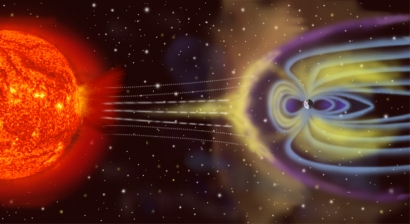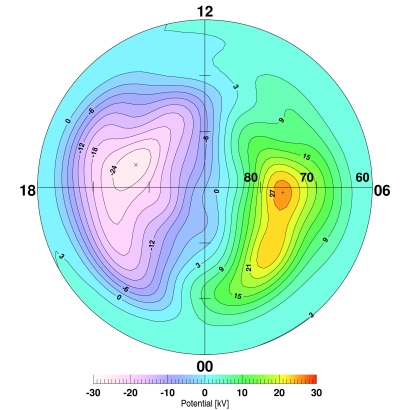Recently however, astronomers have found stars with "no detectable traces of helium and hydrogen in their atmospheres" (Patrick Dufour). Dufour along with other astronomers at the University of Arizona believe that they may be seeing the bare cores of these white dwarfs. Found using the Sloan Digital Sky Survey (SDSS), white dwarfs such as these (which displayed carbon features) are dubbed DQ's (carbon white dwarfs). When observed via optical light, DQ white dwarf stars appear to be mostly carbon and helium. It is hypothesized that convection within the star causes carbon from the core to be dredged-up to the surface.
So far, eight carbon-dominated atmosphere DQ white dwarfs have been found among the 200 that Dufour and his team have searched. However, these stars lie at temperatures between 18,000 and 23,000 Kelvin, much hotter than what can be explained using the standard (convection/dredged-up) model for DQ white dwarfs. It is thought that these stars could be the next evolutionary step for
 stars such as H1504+65 (a hot pre-white dwarf star which is thought to have a surface of 50% carbon and 50% oxygen), which was discovered by John Nousek (of Pennsylvania State University), Leibert (of UA), and others. Currently, H1504+65 has a temperature of about 200,000 K; however, it is thought that when this star cools, it could become a pure-carbon star. The picture to the left is an artists conception of what the surface H1504+65 looks like.
stars such as H1504+65 (a hot pre-white dwarf star which is thought to have a surface of 50% carbon and 50% oxygen), which was discovered by John Nousek (of Pennsylvania State University), Leibert (of UA), and others. Currently, H1504+65 has a temperature of about 200,000 K; however, it is thought that when this star cools, it could become a pure-carbon star. The picture to the left is an artists conception of what the surface H1504+65 looks like.For stars above 25,000 K, Dufour and his colleagues say that traces of helium rise up to the top of the star, which forms a thin layer and thus, disguises the star as a helium white dwarf. However, between the temperatures of 18,000 and 23,000 K, it is thought that convection dilutes the helium, the heavier oxygen sinks to the core, and the carbon is seen. It is also thought that a mass of nine to eleven solar masses could explain the carbon atmosphere white dwarfs found.
I think that this find is interesting because it could represent a new branch in stellar evolution. This could change the way we look at the formation and death of stars in the universe. The more unusual stars that are found, the more we can learn about stellar dynamics which are taking place now (and possibly about ones that occurred in the past).
http://uanews.org/node/17027







